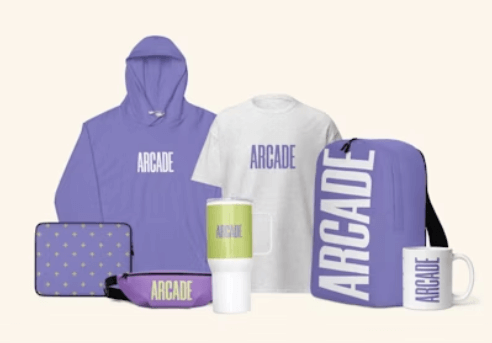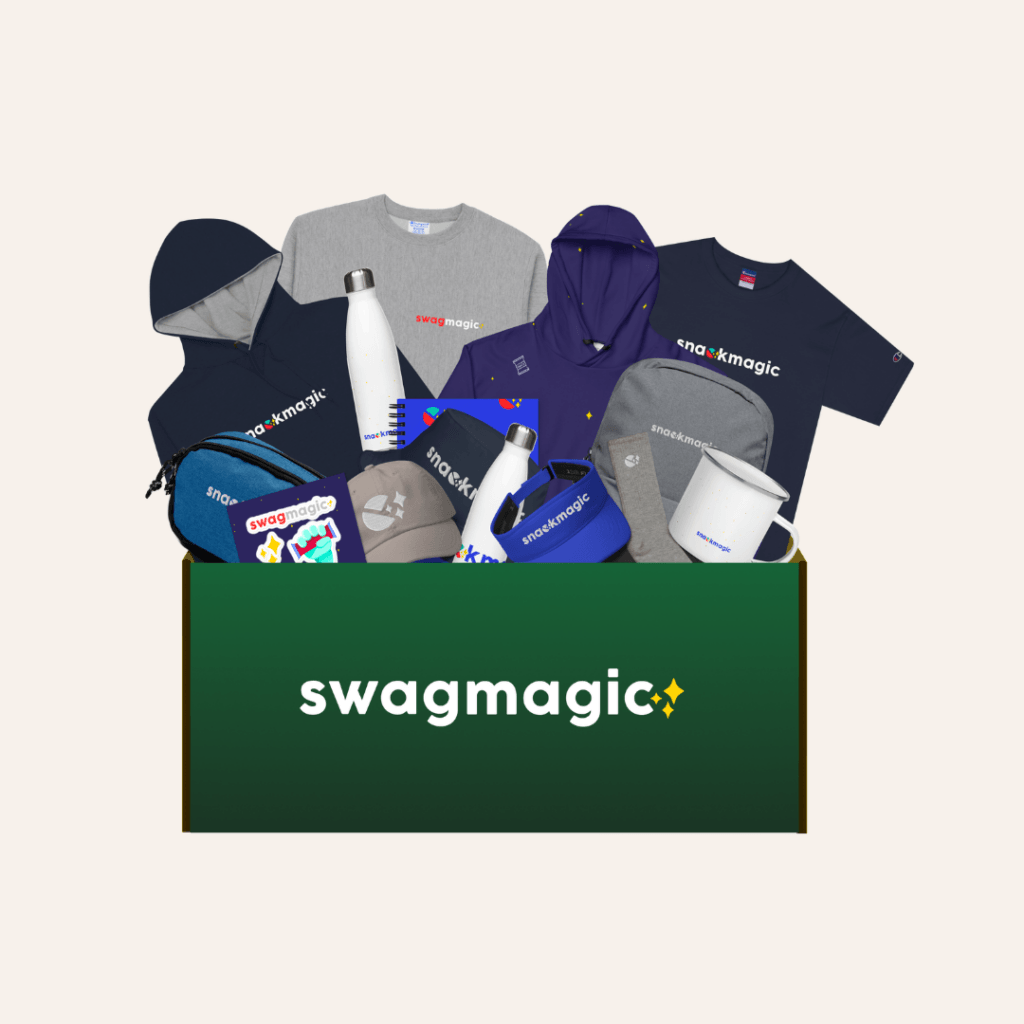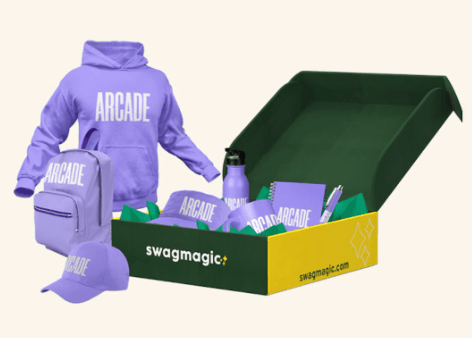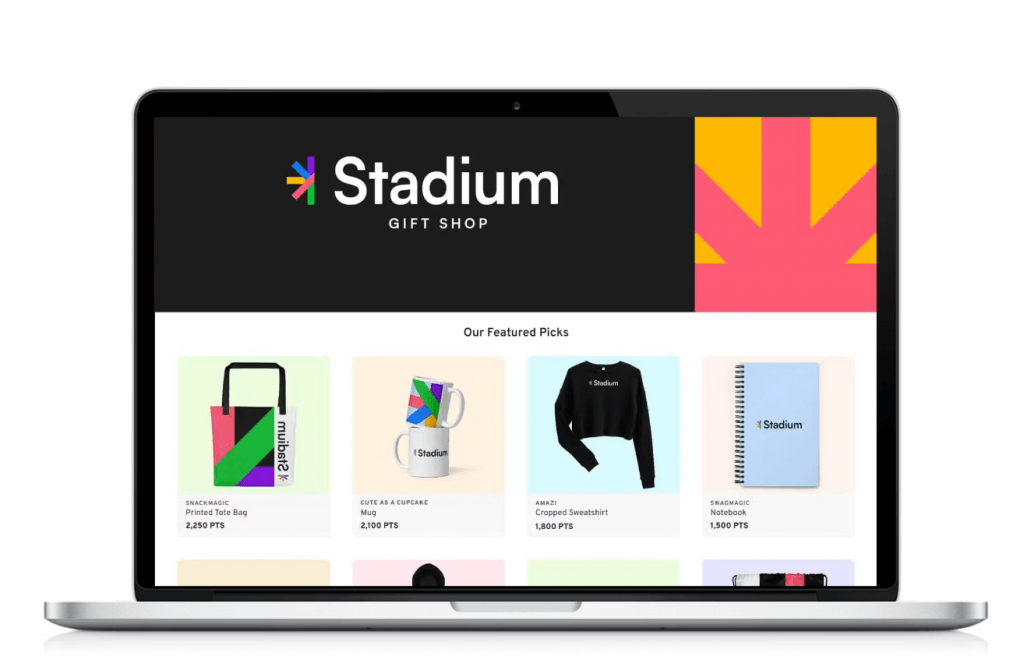Corporate gifting can be a powerful lever for pipeline creation, customer loyalty, employee engagement, and brand visibility—but proving its impact is notoriously tricky. Data lives in different tools (CRM, marketing automation, HRIS, shipping systems); many outcomes are qualitative (gratitude, goodwill, brand lift); and timelines stretch across quarters (from first touch to closed-won or from onboarding to annual retention). Meanwhile, bulk swag programs often tie up cash in inventory and storage, leading to waste that makes ROI even harder to defend.
This guide gives you a practical, step‑by‑step playbook to measure the success and ROI of corporate gifting. You’ll define clear outcomes; build a measurement framework; instrument airtight tracking; connect gifting to revenue, retention, and satisfaction; run experiments; and tell a credible story to leadership. Along the way, you’ll see how SwagMagic’s claim‑based, print‑on‑demand, and global fulfillment capabilities make the numbers cleaner and the waste lower.

How SwagMagic can help your brand?
- Bulk Buy & Save on your gifts!
- Curate Customized Swag Boxes!
- Launch Your Store for your employees!
- Secure Swag Storage with us!
Table of contents
Ways & Ideas to Measure Corporate Gifting ROI
- Define outcomes and North Star metrics: Start with the “why.” Tie each gifting initiative to a single primary outcome—meetings set, opportunities created, renewal rate, expansion ARR, eNPS, or 90‑day retention—and limit yourself to three to five supporting KPIs so the team knows what winning looks like. Establish baselines (last quarter or last comparable campaign), decide the target lift you need to justify spend, and write a SMART objective such as “Generate 30 meetings with ICP directors in Q4 using claim‑based swag invitations.” The benefit of this discipline is twofold: you avoid vanity metrics and create a standard against which everyone can report.
- Build a measurement framework that mirrors your funnel: Translate your program into a simple logic model—Inputs (budget, list) → Activities (send claim invites) → Outputs (claimed and delivered) → Outcomes (meetings, opps, renewals) → Impact (revenue, retention, ROI). Map each stage to a data source (SwagMagic redemption, CRM, marketing automation, CS platform, HRIS) and define stage gates so that conversions are consistent (for example, Claimed → Meeting in ≤30 days; Meeting → Opportunity in ≤45 days). Write down known attribution caveats like seasonality or overlapping campaigns so nobody overclaims credit.
- Instrument tracking so every gift is measurable: Give each audience/offer a unique claim link or QR code with UTMs (source/medium/campaign/content), use per‑segment landing pages to capture micro‑conversions (book demo, schedule time), and standardize naming so CRM/MA fields line up with operations data. For commerce flows, layer in unique codes or vanity URLs that are human‑readable. Always secure consent and respect regional privacy rules. When this foundation is in place, you can slice performance by segment, persona, gift value, and timing without manual spreadsheet gymnastics.
- Use redemption analytics as your leading indicator: Before pipeline or retention numbers mature, redemption tells you if the offer resonated and whether logistics worked.
Track redemption rate (claimed ÷ invited), claim velocity (median hours/days to claim), delivery success %, viewed‑but‑not‑claimed counts, device mix, and bounce points. If claim rate lags, test higher perceived value, clearer copy, or mobile‑optimized pages; if velocity is slow, try tighter expiry windows and reminder sequences; if deliveries fail in specific regions, investigate address validation and customs friction.
- Connect gifting to revenue and retention in your system of record: Create a campaign in your CRM for each gift motion, sync member statuses (Invited, Claimed, Delivered), and decide what counts as Sourced vs. Influenced pipeline. Choose an attribution approach (first‑touch for simple plays, last‑touch for short cycles, position‑based or time‑decay for multi‑touch journeys) and keep it consistent for comparability over time. For Customer Success motions, log gift activities to accounts and evaluate correlations with renewal and expansion outcomes by cohort.
Curate the perfect box of handpicked gift they’ll love and send joy their way
- Prove incrementality with holdouts and controlled experiments: Randomly hold back a fair control group at the contact or account level, keep messaging/timing equal, pre‑register success thresholds (for example, ≥20% lift in meetings), and run for a complete cycle to avoid timing bias. Analyze lift on reply rate, meeting rate, SQLs, opportunity creation, ACV, win rate, and renewal %, and remember that a smaller but statistically confident lift is more defensible than a big but noisy spike.
- Capture qualitative lift to complete the picture: Pair hard numbers with short, actionable pulses: “How satisfied were you with the gift?” “Would you take a meeting?” “How likely are you to recommend us?” Add one open comment field to harvest quotes that sales or HR can reuse. Tag survey responses with your campaign ID to compare sentiment across offers, gift values, and regions.
- Calculate ROI, payback, and efficiency using simple math: Compute Incremental Revenue as test minus holdout, multiply by gross margin to get Incremental Profit, and then use ROI = (Incremental Profit − Total Program Cost) ÷ Total Program Cost.
Add Cost per Meeting/Opportunity and Payback Period (Total Cost ÷ Monthly Incremental Profit) to your dashboard, and rerun LTV: CAC with gifting included to show strategic efficiency.
A quick example: 500 invitations, 45% claim on a $50 all‑in cost (~$11,250), 25 incremental meetings, 8 opps, 3 wins at $15k ACV, and 70% margin yields ~$31,500 profit before cost, a 1.8× ROI, and sub‑quarter payback.
- Apply event‑specific KPIs for virtual and in‑person gifting: Track RSVP rates, on‑site scans or session check‑ins, QR/claim scans, on‑site redemptions, demos booked, post‑event claims, follow‑up replies, and pipeline created inside 30/60/90 days. Use on‑site QR codes to trigger branded claim pages, tier gifts for attendees who book demos, and test signage or copy to lift scan‑to‑claim conversion.
- Measure internal (HR) gifting with people‑centric metrics: Aim at eNPS, onboarding completion, and time‑to‑productivity, 90‑day retention, participation in recognition programs, internal CSAT on kits, and referral rates. Connect to HRIS to automate triggers (new hire, anniversary, birthday) and analyze outcomes by cohort so you can show whether recognition moments correlate with lower early attrition or higher engagement.
- Quantify waste, storage, and sustainability gains as hidden ROI: Bulk swag often ties up cash and ends with write‑offs. Track unused inventory %, storage fees, re‑order frequency, dead SKUs, replacements, and dollars avoided when you switch to claim‑based, print‑on‑demand fulfillment. Converting saved units × landed cost into a dollar figure makes sustainability improvements visible to finance.
- Watch global operations metrics to keep programs reliable: For international audiences, follow address validation pass rate, customs delay %, average time‑to‑door by country, landed cost variance vs. estimate, replacement/resent rate, and delivery success %. Pre‑validate addresses, harmonize HS codes, and communicate duties up front to reduce friction and protect claim‑to‑delivered conversion.
- Track automation and operational efficiency to show scale: Connect gifts to triggers in CRM/MA (webinar attended, meeting booked, closed‑won) or HRIS (new hire, anniversary) so programs run without manual work. Report hours saved per campaign, manual touches removed, SLA adherence, and campaigns per headcount; operational savings improve ROI even before revenue effects land.
- Establish a reporting rhythm and a dashboard that tells a story: Run a weekly operational review (delivery and redemption), a monthly program review (funnel and ROI), and a quarterly executive roll‑up (impact and learnings). Visualize the funnel from Invited → Claimed → Meeting → Opportunity → Revenue, add cohort views by segment or gift type, track cost vs. impact trendlines, and annotate charts with two or three real recipient quotes to humanize the data.

How SwagMagic Helps You Prove Gifting ROI
SwagMagic is built to make measurement straightforward: claim‑based, print‑on‑demand fulfillment reduces waste; mobile‑optimized redemption increases engagement; company swag stores centralize governance and data; and the broader SnackMagic/Stadium ecosystem lets you combine swag, snacks, and recognition for end‑to‑end programs. Below, you’ll find how SwagMagic supports ROI proof, each weaving together how it helps, what to track, and an example.
- Shift to claim-based, print-on-demand fulfillment to slash waste: Instead of guessing sizes or ordering in bulk, invite recipients to choose from curated swag kits or individual items within a set budget. Nothing is produced or shipped until it’s claimed — which means no dead inventory, no storage fees, and happier recipients who actually get what they want. Kits can be customized to fit different themes — onboarding, holiday, remote-work essentials — giving employees or clients a complete experience rather than a single item. Track performance with metrics like claim rate, time-to-claim, delivery success %, and dollars avoided versus bulk orders. For example, if you previously ordered 1,000 shirts and wrote off 30% at a $18 landed cost, moving to claim-based kits immediately frees up about $5,400—before even counting staff time saved on packing, sorting, and re-shipping.
- Launch a branded company swag store to centralize data and control: Provide a self‑serve storefront for employees, customers, or partners, layering budgets by team/region, SKU governance, and unified reporting. This reduces rogue spend and connects every order to a campaign or cost center for clean attribution. Watch orders per team/region, repeat usage, average order value, internal CSAT, SLA adherence, and budget vs. actuals. Common implementations include internal recognition stores (HR), partner co‑op stores (Channel), and time‑boxed event stores.
- Use mobile‑optimized redemption flows to lift engagement: Many recipients first see gifts on their phones. SwagMagic’s responsive, friction‑light pages shorten the path from invite to claim, improving claim rate and velocity—both early proxies for downstream impact. Monitor mobile vs. desktop claim rates, drop‑off points, resend rate, and delivery success; personalize pages by segment to boost completion for key personas or regions.
- Leverage the SnackMagic & Stadium ecosystem for end‑to‑end programs: Combine swag with snacks/food gifting (SnackMagic) to increase participation in events or meetings, and tie employee recognition (Stadium) to measurable outcomes like eNPS and program participation. Track participation/claim rate across gift types, survey scores, recognition activity, retention correlations, and budget allocation vs. outcome by program. Enterprise teams can add SSO, custom domains, APIs, and exports to feed BI tools so leadership sees one coherent story from invite to impact.
FAQs: Measuring Corporate Gifting Success & ROI
1) What’s a good target redemption rate, and how do I improve it?
Typical claim‑based campaigns aim for 40–60% redemption, but it varies by audience and value. Improve by segmenting offers, making redemption mobile‑friendly, sending reminders, and aligning the gift with recipient preferences.
2) How do I connect gifting to pipeline and revenue?
Create a CRM campaign for the gift, sync recipient statuses (Invited/Claimed/Delivered), and attribute meetings/opps using your chosen model. Use holdouts to calculate incremental lift and tie to booked revenue.
3) What budget % should go to swag vs. snacks vs. shipping?
There’s no universal split; start with a 60/25/15 (items/snacks, shipping & duties, admin/platform) guideline, then optimize by analyzing ROI by component.
4) How can I run a fair gifting holdout test?
Randomize at the contact/account level, keep copy/timing the same, and pre‑define your success metric and minimum detectable effect. Run for a full sales cycle to avoid timing bias.
5) Which attribution model should I use?
Pick one that fits your funnel length. Position‑based (40/20/40) or time‑decay handle multi‑touch journeys better than strict first/last‑touch, but consistency over time is more important than the exact model.
6) How do I measure internal gifting (HR) vs. external (Sales/Marketing)?
For HR, focus on eNPS, onboarding time, 90‑day retention, and referrals. For external, focus on meetings, opps, revenue, and NPS/CSAT from customers. Keep dashboards separate but roll up spend and efficiency metrics.
7) What’s the simplest ROI formula leadership accepts?
Use: ROI = (Incremental Profit − Total Cost) ÷ Total Cost. Estimate incremental profit via holdouts or historical baselines, and be transparent about assumptions.
8) How do I reduce waste and prove sustainability benefits?
Move from bulk to claim‑based, print‑on‑demand fulfillment. Track reductions in unsent units, storage costs, replacements, and reprints. Convert saved units × landed cost into $ savings.
9) What KPIs matter most for event gifting?
RSVPs, booth scans, on‑site claims/QR scans, meetings scheduled, demos, post‑event claim rate, and 30/60/90‑day pipeline/revenue influenced or sourced by the event.
10) What reporting cadence should I use for execs vs. operators?
Operators: weekly ops + monthly program dashboards.
Executives: quarterly roll‑ups with ROI, payback, and 2–3 learnings with next tests. Keep it visual and succinct.




Leave a Comment